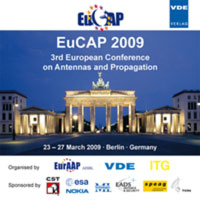Applicability of the 50-90 GHz frequency bands in feeder networks
Conference: EuCAP 2009 - 3rd European Conference on Antennas and Propagation
03/23/2009 - 03/27/2009 at Berlin, Germany
Proceedings: EuCAP 2009
Pages: 5Language: englishTyp: PDF
Personal VDE Members are entitled to a 10% discount on this title
Authors:
Frigyes, István; Bitó, János; Héder, Balázs; Csurgai-Horváth, László (Budapest University of Technology and Economics, Department of Broadband Infocommunications and Electromagnetic Theory, Budapest, Hungary)
Abstract:
As microwave and lower-frequency millimetre-wave bands become congested, users of those frequency bands, especially mobile operators have to extend the operating region to higher millimeter-wave frequencies. The frequency bands around 50…90 GHz, considered in this study, exhibit significant differences regarding their propagation properties. For instance the specific attenuation of oxygen varies non-monotonically over the frequencies of interest: at 50 GHz, this quantity is about 0.03 dB/km and at 70 GHz about 1…2 dB/km whereas at about 60 GHz a peak attenuation of 16 dB/km is observed. These and other propagation effects call for significantly different link planning methodology. Moreover, they pre-determine the primary application of the various bands. This study is intended to give an overview on the potential applications of these frequency bands which are only recently employed for communication purposes.


